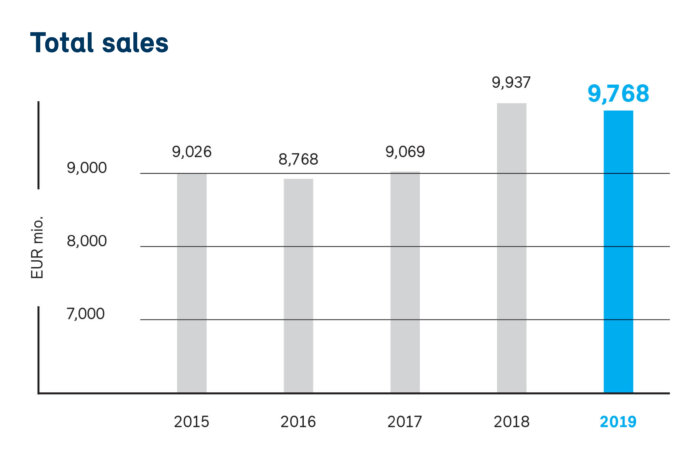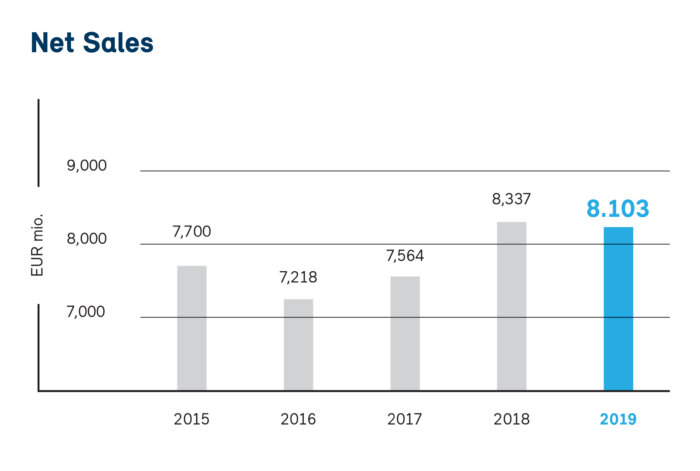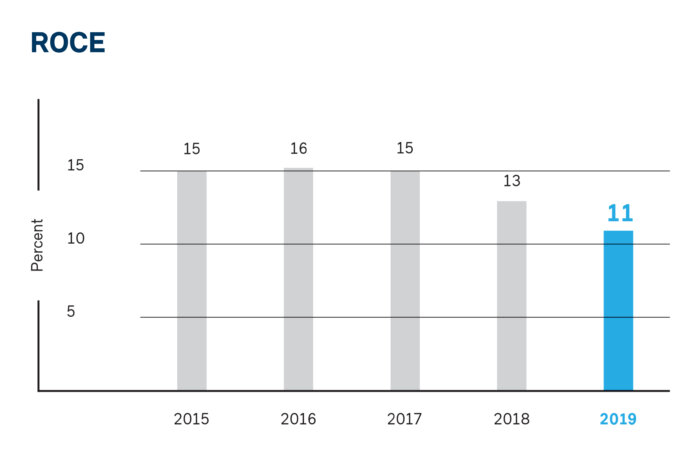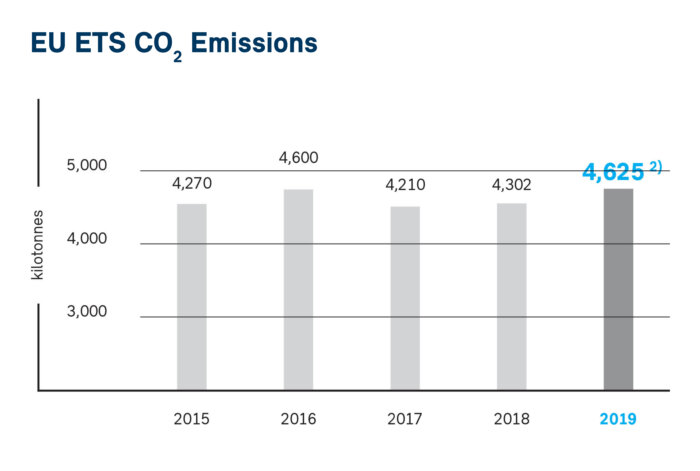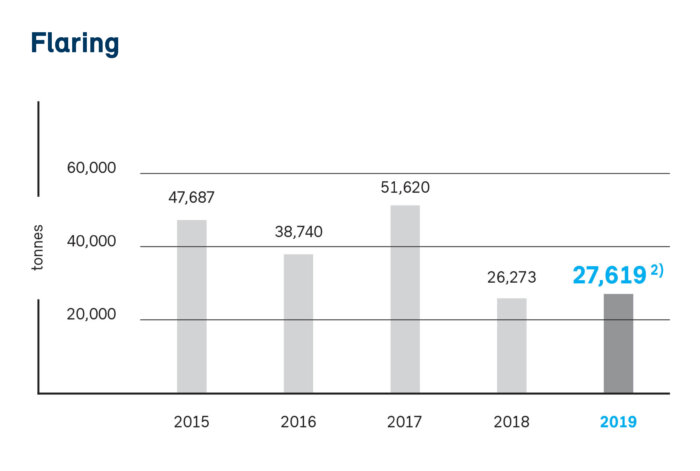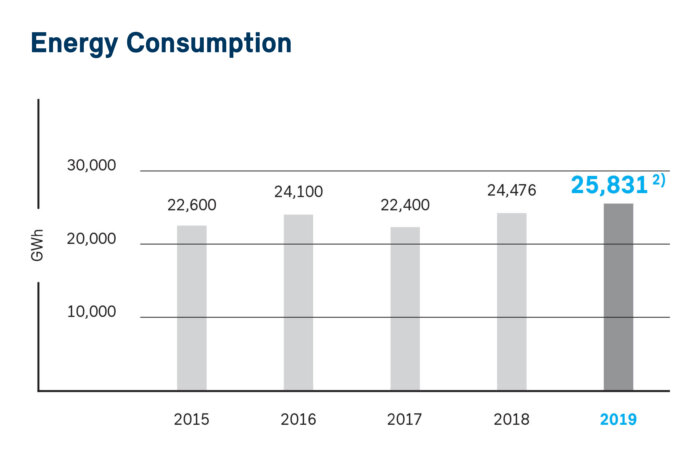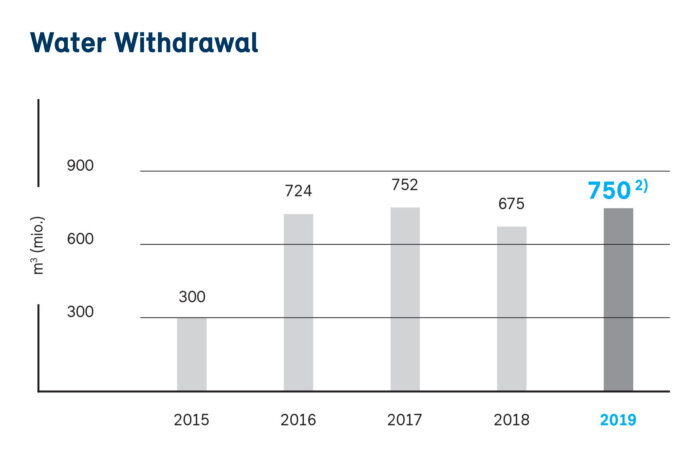For the full year 2019, Borealis recorded a net profit of EUR 872 million, compared to EUR 906 million in 2018. The 2019 result was negatively impacted by a lower polyolefins price environment in Asia, which affected the contribution from Borouge. However, the negative impact was limited due to healthy integrated polyolefins margins in Europe together with improved results in the Fertilizer, Melamine and Technical Nitrogen Products segment.
Net debt increased by EUR 241 million, driven largely by the high investment level related to growth projects and the payment of a EUR 525 million dividend for 2018 and a EUR 300 million interim dividend for 2019 to Borealis shareholders. The cash inflow from the solid business result and dividends from Borouge enabled Borealis to keep its financial position strong, with a gearing of 24% at year-end 2019.
In 2019, Borealis’ goals were to
During 2019, Borealis:
In 2019, Borealis produced 4,625 kilotonnes of scope 1 CO2 equivalent emissions. This is more than the 4,302 kilotonnes in 2018, due to fewer turnaround activities and higher production output.
The absolute level of CO2 equivalent emissions is related to Borealis’ overall production volumes and to the number of turnarounds, which result in flaring-related CO2 emissions from emptying storage and plants.
The Group is committed to continuously improving its energy efficiency and thereby reducing its CO2 equivalent emissions, while increasing production volume and ensuring plant reliability. This remains a challenging journey.
To calculate its emissions performance, Borealis uses a broad range of emission factors, which are a means to calculate the GHG emissions for a given source. Each EU member state has a national inventory of emission factors, which means that, for example, natural gas use in Austria would have the specific Austrian emission factor applied to it. Other emission factors are standard factors from scientific literature or are measured by a certified laboratory. All emission factors are permitted and approved by the relevant authorities.
Flaring losses in 2019 were 27.6 kilotonnes, compared to 26.3 kilotonnes in 2018, with the continuous effort on reducing upsets and flaring improvements, the major difference being that we had one very significant upset caused by an external power failure accounting for almost 3 kilotonnes.
Every year, the Group defines its targets for flaring. Turnarounds and other internal and external factors require ongoing adaptation. In particular, flaring increases in years with higher numbers of turnarounds. These regular maintenance programmes inevitably lead to more flaring, as plants or lines must be shut down, emptied and ramped up again.
Borealis is also enhancing its reporting of flaring incidents. This will support its ability to achieve zero non-emergency flaring.
In 2019, Borealis’ total primary energy consumption was about 25,831 GWh compared to 24,476 GWh in 2018. This represents an increase of 1,355 GWh compared to the previous year due to fewer turnaround activities and higher production output.
Borealis has approved investment programmes which will lead to savings of 2,191 GWh of primary energy savings in 2020 compared to the 2015 baseline. These projects are examples of measures that were implemented in 2019:
The Group also undertook a series of internal audits to prepare for certification of the energy management system. This enabled Borealis to confirm the ISO 50001 certification across its European locations during the year. All energy efficiency measures are being tracked and their performance monitored.
Borealis’ water withdrawal was 750 million m3 in 2019, compared to 675 million m3 in 2018. The increase in consumption is due to the reduced turnaround activities and higher cooling water consumption during summer because of extreme weather conditions.
The majority of the water Borealis uses in its operations is surface water, for example from water bodies such as rivers and oceans. The remainder is extracted from ground water, wastewater from another organisation, municipal water supplies or other water utilities, and rainwater is also collected.
